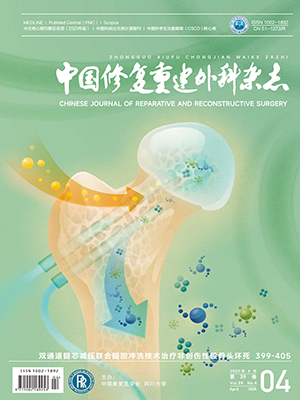| 1. |
Shi X, Liu H, Xing R, et al. Effect of intramedullary nail and locking plate in the treatment of proximal humerus fracture: an update systematic review and meta-analysis. J Orthop Surg Res, 2019, 14(1): 285.
|
| 2. |
Collinge C, Sanders R, DiPasqnale T. Treatment of complex tibial periaricular fractures using percutaneous techniques. Clin Orthop Relat Res, 2000, 375: 69-77.
|
| 3. |
Turhan S. Finite element analysis of the effect of intramedullary nail compression amount on fracture union in distal tibial diaphyseal fractures. Ulus Travma Acil Cerrahi Derg, 2019, 25(3): 293-297.
|
| 4. |
Barcak E, Collinge CA. Metaphyseal distal tibia fractures: a cohort, single-surgeon study comparing outcomes of patients treated with minimally invasive plating versus intramedullary nailing. J Orthop Trauma, 2016, 30(5): e169-e174.
|
| 5. |
Josten C, Marquass B, Schwarz C, et al. Intramedullary nailing of proximal tibial fractures. Complications and risk factors. Unfallchirurg, 2010, 113(1): 21-28.
|
| 6. |
Jankovic A, Korac Z, Bozic NB, et al. Influence of knee flexion and atraumatic mobilisation of infrapatellar fat pad on incidence and severity of anterior knee pain after tibial nailing. Injury, 2013, 44 Suppl 3: S33-S39.
|
| 7. |
Lu K, Wang HZ, Shan HQ, et al. Intramedullary nailing of tibial shaft fractures in the semi-extended position using a suprapatellar approach: A retrospective case series. Injury, 2019, 50(11): 2140-2141.
|
| 8. |
蔡雨卫, 段敬瑞, 房雷, 等. 3D 打印辅助微创接骨板内固定术治疗不同类型胫骨骨折抗胫骨旋转不良差异研究. 中国修复重建外科杂志, 2019, 33(12): 1510-1515.
|
| 9. |
Harly E, Angelliaume A, Lalioui A, et al. Divergent intramedullary nailing (DIN): a modified intramedullary nailing technique to treat pediatric distal tibial fractures. J Pediatr Orthop, 2019, 39(10): e773-e776.
|
| 10. |
Inci F, Yildirim AO, Ciliz DS, et al. Intraoperative rotation control in closed intramedullary nailing in tibia diaphyseal fractures: a prospective, randomised study. Acta Orthop Belg, 2018, 84(4): 461-468.
|
| 11. |
Lorich DG, Geller DS, Nielson JH. Osteoporotic pertrochanteric hip fractures: management and current controversies. Instr Course Lect, 2004, 53: 441-454.
|
| 12. |
刘继春, 唐志红, 王灿斌, 等. 改良单侧截石位及 G 形臂在 GardenⅠ、Ⅱ型股骨颈骨折闭合复位内固定术的应用分析. 创伤外科杂志, 2018, 20(5): 350-352.
|
| 13. |
郑忠, 蔡碰德, 顾恩毅, 等. 健侧截石位下无牵引架 PFNA 固定股骨粗隆间骨折. 中国中医骨伤科杂志, 2015, 23(9): 39-40.
|
| 14. |
Horrigan PB, Coughlan MJ, DeBaun MR, et al. Avoiding neurovascular risk during percutaneous clamp reduction of spiral tibial shaft fractures: an anatomic correlation with computed tomography. J Orthop Trauma, 2018, 32(9): e376-e380.
|




